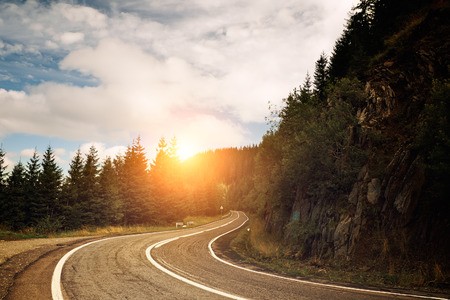
One of the biggest advantages to indoor cycling over outdoor is the ability to focus only on the ride. The mind is free to focus on the body, get lost in music, or visualize terrain created through resistance adjustment. There’s no car ignoring the 3-feet law, no rain cloud threatening, no flat tire, no…well, you get the idea. The rider reaps several of the benefits of outdoor riding in a controlled environment leaving him free to focus as needed.

However, even with all the mental freedom, visualizing abstract terrain can prove difficult, sometimes, and a little unexciting. Terrain can turn into simple resistance adjustments in response to the generic terms “hill,” or “flat.” The problem with that, is that it’s easy for students to lose motivation and drive. A steep incline reverts to a simple mild grade with a twist of the resistance dial once the student gets bored or a little tired. While every student should be encouraged to ride at their own pace and fitness level, they should still be in the mind to push themselves toward their fitness and performance goals.
The challenge is in conveying the idea of terrain in simple, yet motivating and exciting terms. To aid in communication, instructors have to have a clear idea of the terrain on which the cycling journey will “take place.” After all, why must the hill climb conclude just because the song ends? Let the hill conclude at the summit no matter how long it takes!
An instructor doesn’t necessarily have to dream up all-original landscape to have a clearer idea of terrain.
Why not borrow from actual locations?
In honor of the Tour de France this month, we’ll take a look at a race profile from the Tour. We can find flats, rolling hills, and iconic climbs on the list. Of course, modify difficulty and route length unless you have five hours to ride and your class is team BMC.
We’ll check out stage 5 on the Tour website for an example of a profile to borrow.
1. Scroll to the middle of the screen under the heading “A Sporting View”.
2. Click the “Stage Profile” tab for a cut-and-dried showing of the terrain (hint: the lower the number in the red circle, the tougher the climb).
3. Click “Mountain Passes and Hills” to find out the gradient and length of each incline.
4. Feel free to toss in that Intermediate Sprint.
5. You can even hone in on the Final Kilometer and end your class like the peloton.
Check out the other stages by scrolling back up and clicking the Routes tab. Select a stage, and let your class join the Tour. Tell them what stage they’re in and about the terrain they’ll be tackling, and be sure to tell them when to attack and take control of the race!
If you really want to get into it, you can bring in wrist bands in yellow, green, and red and award a race leader, top sprinter, and king/queen of the mountains, respectively, at the end of the class. You don’t have to pick the most athletic participants. Feel free to award the students you feel really had to dig deep, need encouragement, or are cycling newcomers.
Keep in mind that you can also mimic your personal favorite cycling or running route, or an iconic marathon course. Imagination is the limit, but with a clearer picture of the terrain, it will prove easier to communicate goals and help the class visualize and stay focused.
We want to know how your location visualization goes, so go into comments and let us know where you took your class!
Vive le Tour.






